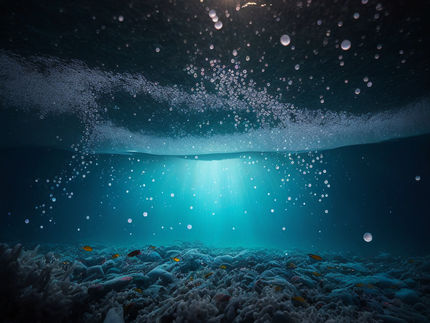Fracking fluid chemicals uncovered, helping test for contamination
Science needs to catch up with the public awareness, say researchers
The organic chemicals in fracking fluid have been uncovered in two new studies, providing a basis for water contamination testing and future regulation. The research, published in Trends in Environmental Analytical Chemistry and Science of the Total Environment, reveals that fracking fluid contains compounds like biocides, which are potentially harmful if they leak into the groundwater.
The authors behind the new study say it's time for the relatively new science to catch up with the extensive public awareness. They say an increasing research focus on contamination from fracking fluid will lead to more attention and regulation in the future.
Fracking is a process used to release oil and natural gas from underground shale rock. It works by injecting fracking fluid - water with chemicals added - at high pressure into wells to create cracks in the rock. When the pressure is released, oil and gas can be recovered.
The fracking fluid comes back out at the surface as flowback water, which can contaminate the surface water and ultimately the groundwater if it is not properly disposed. Fracking companies add certain chemicals to prevent bacterial growth, for example, but until now the precise organic content had not been established. The new studies discuss the organic constituents, providing a way to detect contamination in the water system and proposing methods to recycle the water safely.
"A few years ago we started thinking that this could be a significant environmental water problem," explained Dr. Imma Ferrer, lead author of the research from the University of Colorado, Boulder, USA. "In some cases, the fluid has leaked from pipes and into groundwater. Before we can assess the environmental impact of the fluid, we have to know what to look for. If we find out what's in it, we can check if the groundwater is contaminated."
Previous studies have examined fracking fluid for inorganic content, including salt and radioactive elements that come from the rock formations. This new research focuses on organic compounds - the bigger molecules that companies add in to the fluid. The researchers combined two main techniques to identify these organic compounds: liquid chromatography and mass spectrometry.
The results reveal around 25% of the organic compounds the researchers believe to be present in fracking fluid. This includes surfactants - molecules that are commonly found in soaps - and biocides - potentially harmful compounds that kill microbes in the fluid and the well casing.
"We haven't found everything, but we think these are the most important organic compounds. We've identified the compounds that are necessary to test for contamination in groundwater and drinking water," said Dr. Ferrer.
"It's really exciting because I realized there had been a lot of research done on inorganic compounds, but the organic ones had been left a little bit aside. We now have sophisticated analytical techniques we can use to investigate this relatively new area, and this is really our chance to use these tools to identify as many compounds as we can."
Original publication
Imma Ferrer and E. Michael Thurman; "Chemical constituents and analytical approaches for hydraulic fracturing waters."; Trends in Environmental Analytical Chemistry, Volume 5, 2015.
Yaal Lester, Imma Ferrer, E. Michael Thurman, Kurban A. Sitterley, Julie A. Korak, George Aiken and Karl G. Linden; "Characterization of hydraulic fracturing flowback water in Colorado: Implications for water treatment."; Science of the Total Environment, Volumes 512-513, 2015.
Most read news
Original publication
Imma Ferrer and E. Michael Thurman; "Chemical constituents and analytical approaches for hydraulic fracturing waters."; Trends in Environmental Analytical Chemistry, Volume 5, 2015.
Yaal Lester, Imma Ferrer, E. Michael Thurman, Kurban A. Sitterley, Julie A. Korak, George Aiken and Karl G. Linden; "Characterization of hydraulic fracturing flowback water in Colorado: Implications for water treatment."; Science of the Total Environment, Volumes 512-513, 2015.
Organizations
Other news from the department science

Get the chemical industry in your inbox
By submitting this form you agree that LUMITOS AG will send you the newsletter(s) selected above by email. Your data will not be passed on to third parties. Your data will be stored and processed in accordance with our data protection regulations. LUMITOS may contact you by email for the purpose of advertising or market and opinion surveys. You can revoke your consent at any time without giving reasons to LUMITOS AG, Ernst-Augustin-Str. 2, 12489 Berlin, Germany or by e-mail at revoke@lumitos.com with effect for the future. In addition, each email contains a link to unsubscribe from the corresponding newsletter.




























































